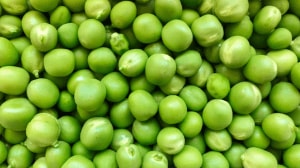When the kitchen became Kurukshetra: Cooking, consciousness, and the everyday Gita
In pots that simmer and spoons that surrender, a chef finds Krishna’s counsel, discovering that the Bhagavad Gita for Everyday Living by Swami Mukundananda
 Some books you read; others read you. Bhagavad Gita for Everyday Living by Swami Mukundananda is a mirror that awakens the self within. (Illustration: Abhishek Mitra)
Some books you read; others read you. Bhagavad Gita for Everyday Living by Swami Mukundananda is a mirror that awakens the self within. (Illustration: Abhishek Mitra)The kitchen has always been my temple, my theatre, my test of truth. Long before I met Swami Mukundananda’s Bhagavad Gita for Everyday Living, I had been living its lessons without realising—offering, tasting, surrendering. Every pot on the stove mirrored a planet in motion; every ingredient, a choice between harmony and havoc.
There are books one reads and puts away, and then there are books that read you back—unveiling chambers of consciousness you did not know were there. Bhagavad Gita for Everyday Living by Swami Mukundananda belongs to the latter kind: a mirror more than a manual, a whisper that becomes a storm within. It is not another translation of the world’s most interpreted scripture; it is a living companion, a red-bound pulse of stillness that walks with you into the noise of your morning and the ache of your midnight.
Mukundananda, an engineer who renounced equations for enlightenment, writes with the precision of science and the poise of surrender. He calls the Gita both Brahma Vidya—the science of the Absolute—and Yog Shastra—the scripture of disciplined practice. “The Bhagavad Gita,” he says, “is not content with providing a lofty philosophical understanding; it also describes clear-cut techniques to implement its spiritual precepts in everyday life.” That line hums like an invocation. It insists that wisdom without action is decoration, and that the battlefield of Kurukshetra lives within us all—in every decision between comfort and conscience, silence and speech, possession and peace.
Arjuna’s paralysis as metaphor
Arjuna’s paralysis, as Mukundananda reminds us, is not ancient myth but modern metaphor. “Arjun was a victim of a moral paradox… facing people who deserved his respect and veneration… yet duty demanded war.” How easily that becomes the story of a man torn between love and vocation, of a chef who leaves a shining kitchen in Manhattan to return to the monsoon breath of Delhi, of anyone who has ever stood trembling at the edge of change. In those moments I have often felt Arjuna’s confusion echoing through me: when to stay, when to go, when to fight for the life you built and when to surrender to the one that calls you home. The Gita does not hand you certainty; it hands you clarity, the kind that comes from surrender.
Mukundananda’s commentary unhooks the scripture from sect and ceremony. “There is one kind of teaching that propagates a dogma, cult, or creed,” he writes, “and another that propagates ideals and life principles above all cults and dogmas.” The Gita, he says, is the latter: “enduring truths of spiritual realities verifiable in our own existence.” This is the Gita I live by—the one that does not demand a temple but asks for attention; that turns a kitchen into a karmic classroom; that converts the slicing of onions into meditation and the serving of food into service. The Gita becomes breath—discipline tasting of turmeric and devotion tempered in ghee.
“The purpose of the Bhagavad Gita,” he writes, “is to impart Brahma Vidya.” Knowledge that solves small problems is one kind of light; wisdom that burns the root of ignorance is another. That distinction—between solving and dissolving—is what separates information from transformation. Cooking taught me that. A recipe solves dinner; awareness dissolves hunger. When I cook without hurry, without self, I find that same silence that Krishna offers Arjuna—a space where work becomes worship, where the spoon is prayer and the plate a planet in balance.
Every verse of this edition is concise as a mantra. Mukundananda’s everyday Gita is truly that: accessible, distilled, portable. “Our ever-rushed and busy schedules do not permit us such luxury,” he concedes, “so this book distils wisdom from the original scripture for quick access and ready use.” It is not a tome for monasteries but a talisman for metros, a text you can keep by your bedside or in your bag. You read a line and it lingers all day like sandalwood on skin.
The lessons arrive like gentle thunder: Clarity of purpose—discover your dharma and the joy of intention. Emotional resilience—face challenges with calm and courage. Decisive wisdom—act without fear, without impulse, guided by timeless principles. The prose is plain yet pulsing. “Rewires negative patterns of thinking,” the blurb promises, and it does. The mind that begins restless slowly learns rhythm; desire dissolves into duty; action detaches from applause. “Because the greatest truths,” he writes, “are not locked in temples or texts. They live in the choices we make—every day.” That sentence alone is worth the price of the book.
When I stand before a simmering pot, that is my battlefield and my temple. The sizzle of oil becomes the sound of surrender. The act of feeding becomes the art of forgetting the self. “You have the right to perform your duty,” Krishna says, “but not to the fruits thereof.” Mukundananda translates it into today’s tongue: focus on process, not applause. It is the same lesson every artist, every lover, every seeker must learn—that purity of action matters more than possession of result.
Gita: The Ultimate truth
 A manuscript illustration of the battle of Kurukshetra, fought between the Kauravas and the Pandavas, recorded in the Mahabharata. c. 1700 – c. 1800 CE. (Wikimedia commons)
A manuscript illustration of the battle of Kurukshetra, fought between the Kauravas and the Pandavas, recorded in the Mahabharata. c. 1700 – c. 1800 CE. (Wikimedia commons)
His language bridges epochs. “The Gita seeks the ultimate Truth for the highest practical utility,” he reminds us, a line that feels almost architectural in its symmetry—eternal yet efficient. He writes like a man who has tested every theory on the anvil of experience. His Krishna is not a mythic blue god but the quiet intelligence inside every choice; his Arjuna is not a warrior with a bow but the trembling human heart.
In my own mornings—those modern wars of messages, meetings, and micro-crises—I often open a random page. Some days it offers calm: “A person who is not disturbed by happiness and distress and is steady in both is fit for liberation.” Other days it offers command: “Be established in Yog, then act.” Between those poles—stillness and service—I find sanity.
The book closes with the Gita’s victorious benediction: Yatra yogeshvaraḥ kṛiṣhṇo yatra pārtho dhanur-dharaḥ / tatra śrīr vijayo bhūtir dhruvā nītir matir mama—“Wherever there is Krishna, Lord of Yog, and Arjuna, the supreme archer, there will be unending opulence, victory, prosperity, and righteousness.” Mukundananda explains that this is not conquest but concord: when the divine will and human will walk together, abundance follows naturally, not as wealth but as worth. Whenever I write or cook or love with that alignment—Krishna as conscience, Arjuna as courage—I feel that quiet victory, that invincible equilibrium.
The Rupa edition itself is an object of serenity: crimson cloth, gold lettering, silhouettes of Krishna and Arjuna bathed in a sun-disc of surrender. It is designed not to sit on a shelf but to live on a table beside your morning tea. Its typography is generous; its layout breathes. It invites underlining, returning, rereading. You can open it anywhere and find yourself mirrored back.
Mukundananda’s question—“In an age of constant distraction, rising stress and spiritual confusion, where do we turn for clarity and calm?”—is the question of our times. His answer is simple: turn inward, turn daily, turn deliberately. This Gita is a detox not of body but of belief. It teaches mental hygiene—how to rinse resentment, how to cleanse comparison, how to polish perception until peace reflects back.
Cooking taught me that everything sacred begins with cleaning—the cutting board, the conscience, the clutter of expectation. Reading this book feels the same. Each page wipes a window; each verse ventilates the soul.
It is, as the publisher calls it, “a companion for every seeker”—from sceptic to saint, from boardroom to bedroom, from monk to mother. It does not preach belief; it practices belonging. It meets you exactly where you are: at your desk, in your doubt, or in your devotion. It takes your hand like Krishna took Arjuna’s and says, “Stand up. See clearly. Act rightly.”
The closing counsel of the text is humility: “If we approach the Bhagavad Gita with pride—‘I am so intelligent; I will evaluate this message’—we will never comprehend it. We must attract Krishna’s grace with faith and loving surrender.” I have learned that lesson often, sometimes painfully. The greatest recipes, like the greatest revelations, arrive only when you stop trying to control them.
A hunger for balance
I have fed thousands, and been fed by thousands more. The deepest hunger I’ve witnessed is not for bread but for balance. Bhagavad Gita for Everyday Living is nourishment for that hunger. It offers not escape from the world but engagement with awareness; not a sermon but a stillness. It teaches that to live fully is to live faithfully, to act intensely yet inwardly untouched, to be in the kitchen and the cosmos at once.
When I close its crimson cover, I feel less like I’ve finished a book and more like the book has finished a part of me—the restless part, the result-chasing part. What remains is simpler: breath, gratitude, attention. The sound of rain against Delhi glass, the smell of cardamom and earth, the quiet certainty that Krishna never left; he merely waits inside each action, asking only that we act without agitation and love without limit.
This is not a text to be read and retired; it is a companion to be lived with. Like a meal that nourishes long after it is eaten, its essence lingers in the body and in the breath. It is both instruction and incantation, a confluence of duty and delight. Long after the last page, it continues to murmur: cook with care, speak with truth, serve with surrender. And in that echo, the battlefield becomes a banquet, and life itself becomes the Gita’s living verse.





- 01
- 02
- 03
- 04
- 05


























